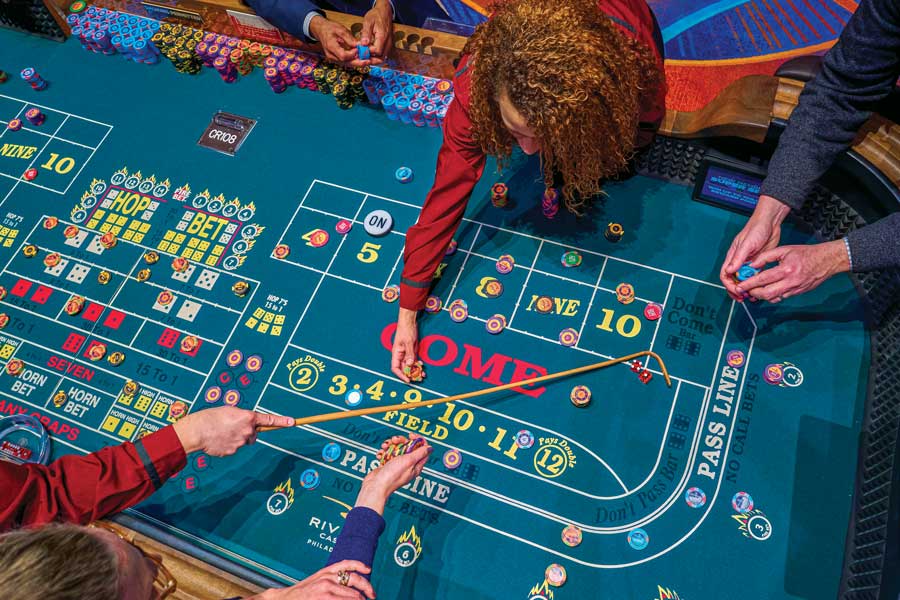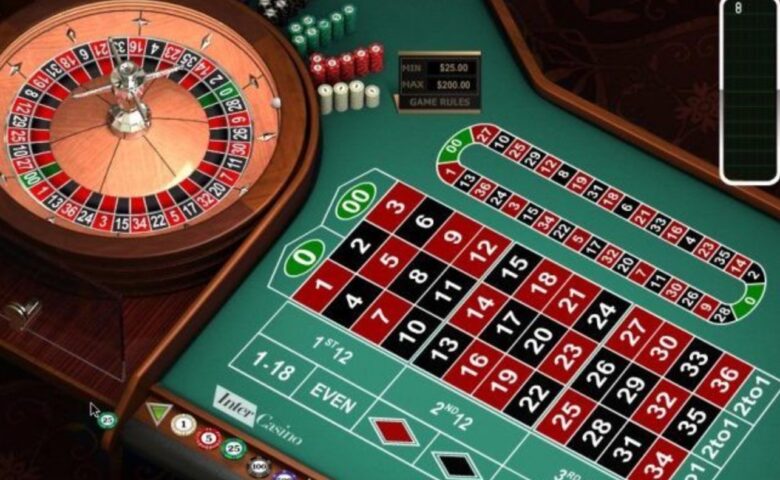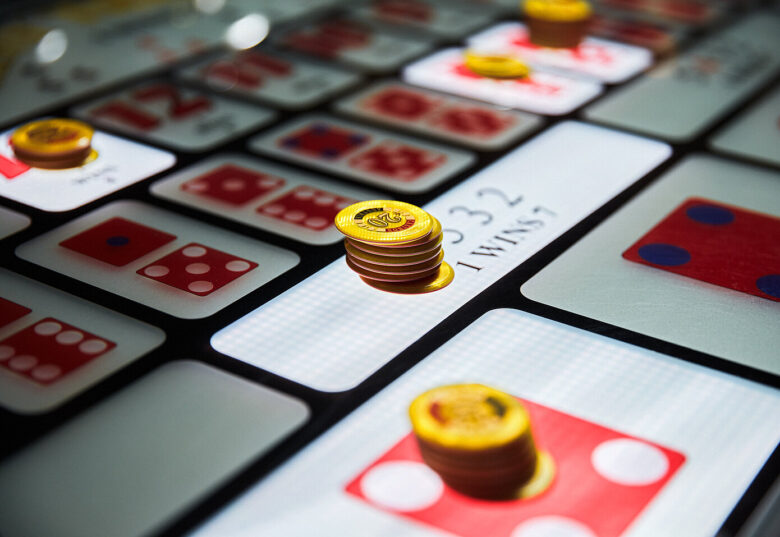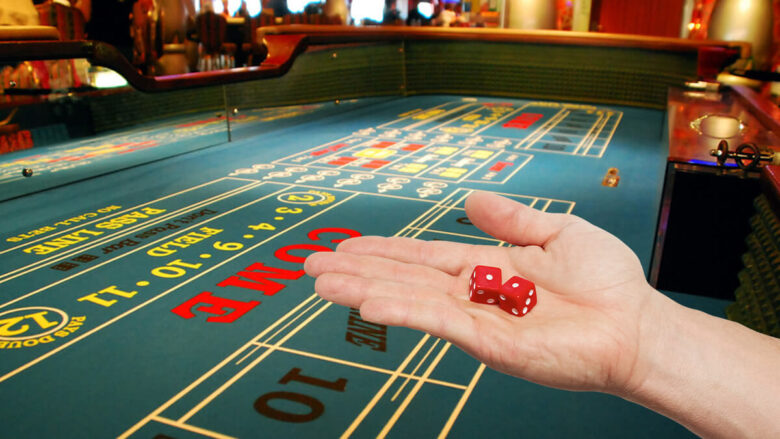Without dice, it would almost be impossible to play social board games, like Monopoly, and land-based or online casino games, like craps or roulette. The unpredictability of these numerical instruments adds to the games’ excitement. Without no means to control the outcomes, it introduces the element of luck, thrill, and, sometimes, risk-taking, enhancing a player’s overall experience.
But have you ever wondered how dice were created and why dice games like craps continue to draw in more players?
Dice games have been around for centuries and have evolved in many ways. This article will look at the history of dice games, from their origins to the present, and examine the key elements that have made them popular throughout the years. We will also take a closer look at craps, one of the most famous dice games, and explore why it has recently remained so popular in recent times.
Contents
Understanding dice and their uses
Dice are used in playing board games with families and friends in and outside the home. Apart from these settings, they’re also used extensively in various casino table games.
In modern days, the rapid rise of online casinos created a growing industry where innovation in dice gambling can occur. Live streaming has been a high growth area, and craps can be played live using these broadcasts and betting interfaces.
The most common version of dice is white with dots corresponding to numbers one to six. However, some physical dice have different designs, like the one used in poker games, number of sides, and shape.
Players often throw, cast, or flip the dice to make them work. The numbers or symbols that appear face up will determine whether they lose a turn, win or lose the game, and add or drop points, depending on the game’s rules.
According to Brittanica.com, the physical structure, quantity, and manner in which they are thrown can determine mathematical probabilities. Although, generally, these physical tools still generate unexpected results.
Dice have been used since ancient times, more than 5,000 years ago. Their primary purpose was to determine how playing pieces should move.

Source: wargamer.com
The origins and evolution of dice
The earliest dice dug by archaeologists existed in 3000 BC in modern-day Iraq and Iran. According to an article by Dr. Karen Carr, Professor Emerita of Portland State University’s Department of History, the ancient Sumerians were the first known dice users made from sheep knucklebones with four flat sides. The earliest dice were also made from the ankle bones of buffalo and other animals.
During the Roman and Greek civilizations, dice were made from various materials, often more expensive than animal bone. These included rock crystal, bronze, marble, porcelain, and ivory, among many others.
Proving that gaming dice is universal, these numerical tools have also been discovered in China and Egypt from excavations believed to have existed in 600 BCE and 2000 BCE, respectively. Indian literature likewise recorded dice use more than 2,000 years ago.
Because dice were invented before numerical symbols and writing systems, these ancient tools had dots instead of numbers. The modern dice looked like the ones used in modern times; one dot is placed opposite six, while the side with three dots is positioned on the other side of four. This design is universally used across all corners of the world.
History of dice games
Four-sided dice were used in the ancient board game Royal Game of Ur, which Sumerians used for entertainment. They used a spinning top called teetotums to replace this gaming tool. Our ancestors also experimented with the shape by creating six-sided dice.
Besides this Sumerian board game, other civilizations used dice in playing games. For instance, in China, people used to play another board game, liubo. Played by two players, the board features symmetrical patterns where players have to move their pieces around.
In India, dice were used as early as 2000 BC. Chaupar is one of the country’s most prominent ancient dice games and involves 3 dice, a game board, and 16 pieces.
Ancient Koreans used two-sided dice to play a traditional race game called nyout, which includes two blocks of wood, one straight and one curved. The dice are thrown through a ring attached to the wood on the ground. In Tibet, dice were used in a mountain-pass competition named sho, only that the instruments were engraved with native symbols instead of dots.
Native Americans used and played dice sticks similar to their counterparts in other corners of the world.
Most of these ancient dice games are understandably not being practiced anymore. But other board games and dice gambling games have taken their place for people’s entertainment.
Modern dice games
Nowadays, almost every board game or land-based or online casinos use dice to play multiple games. Here are some of the most common dice games that attract players worldwide.
1. Craps

Source: phillymag.com
Craps is considered one of the world’s most famous games and is featured in all online and offline casinos. This exciting game is purely a game of luck, where the goal is to predict how the tossed dice will come out.
There are numerous iterations of the simple craps game. Some game developers tweak specific game conditions and winning terms and have different bet types that provide various payouts. These include place, buy, lay, and pass line bets, among many other variations. The table is played in two stages, each divided into two rounds: the come out and the point. Players gather around the table and wait for their turn to toss the dice, which is determined in a clockwise movement.
In a simple craps game, a shooter wins when they roll a two-through-four or a ten-through-twelve. Conversely, a player who rolls a five-through-nine loses. Online casino dice game beginners will find this game simple, easy, and exciting. Veteran players, however, can play other variations with more challenges and, perhaps, higher stakes.
2. Banka Fresca

Source: techstory.in
Banka Fresca is another famous online casino game that uses dice. It’s an exciting and fast-paced game that’ll keep your heart pumping. This game uses three pieces of six-sided dice with three bets: aces, big, and small. The outcomes of the dice are the basis for your total score. Unlike most gambling games, you can change your bets between dice tosses.
The dealer rolls the dice until three combinations are formed, and you get to pick which results will show up first. Big wagers refer to dice results between 14 and 15, while small bets occur when the cumulative dice score ranges from five to seven. A winning aces wager wins when all the dice land on one, which often gets a player the highest payoff. Think of it as playing baccarat, only with dice.
3. Sic Bo

Source: casinos.at
This game originated in Asia but has gained popularity in the rest of the world. Like craps, this typically online dice game is offered in multiple virtual casinos for pure entertainment. And like popular online casino games, providers often tweak the terms and winning conditions to develop several game iterations.
Sic Bo’s primary objective is to predict the dice’s outcomes, similar to craps. However, three pieces of dice are used in this game, which dramatically affects the results. Unlike craps, Sic Bo only allows players to bet and roll once, and there’s no dealer to base your bets on. In addition, betting options are quite different in Sic Bo. For instance, small bets are collected if the dice results are between 4 and 10, while big bets are won if the total ranges from 11 to 17.
4. Klondike

Source: gamblingsites.org
Another popular virtual and brick-and-mortar casino game, Klondike, also has multiple versions. On land-based tables, this dice game uses five implements, and a player’s goal is to outwit the dealer or banker by building a better hand.
In virtual games, Klondike is played using ten dice and a table with various interfaces that feature win, lose, and beat two aces. The dealer uses five dice to generate a hand. A player gets to toss five dice and must beat the banker or dealer based on the chosen condition. For instance, the combination must surpass the dealer’s if the winning term says win, whereas the total must be lower if the player bets on lose. The best values are one, six, five, four, and two.
Why craps games are popular
Craps was invented in 1125 during the Crusades, where it was originally called Hazarth, which then became Hazard. The game became highly popular in the 17th century, especially in France, and was played pervasively, even on the streets. In fact, the term craps is believed to be an alliteration of the French term “crapaud” (toad), describing how gamers looked when playing the game without tables.
The game was later brought to American soil and adopted by casinos by wealthy French settlers in New Orleans. Years later, John Winn, a dice maker, added the “don’t pass” betting option to overcome game design flaws in casinos. It didn’t take long before craps became a fixture in Las Vegas casinos, where its popularity started to explode.
From the streets to land-based casinos, the game has found its way to virtual gaming sites, also called online casinos. As such, craps continue to be one of the most popular games for the following undisputed reasons:
- It can be played with minimal equipment (dice).
- It’s a social game of up to 20 people.
- It’s an exciting and thrilling game.
- It’s a game of chance.
- It’s simple and easy to learn.
The adoption of craps in the virtual realm has also made craps and other dice games more popular than ever.
How technology contributes to craps and dice games’ popularity
According to a survey, around 1.6 billion individuals gamble at brick-and-mortar and virtual casinos and betting sites worldwide, representing 26% of the population. Of these figures, 17% of betting transactions are done through the internet, bringing the online gambling market revenues to GBP£5.3 billion. Some 4.2 billion people also wager at least once a year.
With such a huge following, the gaming industry is always one of the first sectors to embrace technology for various applications, including data processing, customer service, game development, and other core business operations.
Such investments may benefit the industry primarily, but they also contribute to the game’s popularity through the following:

Source: indulgexpress.com
-
Live streaming and accessibility
There are an estimated 6.84 billion global smartphone users, according to Statista. Along with being used for communication and information access, mobile phones are typically used for entertainment.
Smartphones’ pervasiveness is the primary reason online games’ popularity boost, including common virtual games like craps. These titles can be played anytime and anywhere, even on the go. It even makes betting on contact sports like the Ultimate Fighting Championship (UFC), among others.
Live streaming is the current buzzword in the gaming sector. The most popular live streaming services provider boasts over 2 million concurrent users. Famous personalities like influencers often partner with online betting sites to stream their game sessions and attract more players. However, even regular players can go to live casino games, so long as it’s allowed in a specific territory.
-
Cryptocurrency and high payouts
One of the major draws for online casino games is the potentially huge payout. While beginners and veteran bettors must only wager the amount they can afford to lose, some virtual craps casinos offer low minimum bets and a high return to player (RTP) offers.
Cryptocurrency contributes to craps’ popularity because of the anonymity, decentralized transactions, and fast processing features they offer. These benefits allow players to place their bets and collect the pot prize without compromising security. More sign-ups mean more prizes to be had, contributing to high returns.
High-stakes craps tournaments are likewise being offered by physical casinos, attracting players from all corners of the world. The highest jackpots in table craps history involved cumulative wins of USD$40 million and a one-time payout of USD$1 million by Archie Karas and Stanley Fujitake.

Source: coingape.com
-
Virtual reality and enhanced user experience
Virtual reality has revolutionized the gaming sector by improving the online user experience. By connecting to the internet and wearing virtual reality equipment, a player can be transported to the digital realm while having real-world experiences.
Online craps players who want to feel like they’re in an actual casino can take advantage of this technology to play and interact with other players.
-
Artificial intelligence and improved gameplay
Game developers rely on machine-learning platforms or artificial intelligence (AI) to create more exciting titles, including a variety of online craps games. This technology also makes gathering and processing big data easier, allowing companies to understand user behavior and preferences better.
Additionally, AI-run chatbots make interactions fast and more seamless without using human touch. The site’s help section assists players in exploring the game and improving their gaming skills. Free craps online demos, which also often have AI integrations, help players understand the rules and pick out the best bets based on their abilities and player level.

Source: forbes.com
Concerns about dice games and craps
While some might say that gambling in any form leads to addiction, especially with technology making them more accessible, self-discipline is necessary to prevent heavy losses and other significant problems. Regulations are also imposed in multiple countries to restrict players from going overboard.
Similarly, online casinos use virtual dice that rely on random number generation (RNG), which means they cannot be controlled. A machine or virtual tool that uses RNG does not follow or record specific patterns, so they’re hard to predict. Technology likewise addresses cheating concerns in gambling, especially through live streaming. Broadcasting the game makes it more transparent and welcomes scrutiny from gambling experts.
Conclusion
Dice games have been around for centuries and have evolved in many ways. Craps, in particular, has remained a popular game throughout the years. The game’s adaptability to the online world and the rise of technology has helped it to maintain its popularity even in the present. The history of craps and other dice games is a testament to the timelessness of these games and the excitement they bring to players.
